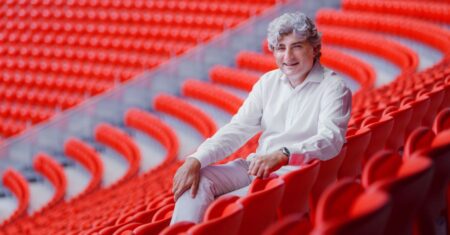Fiorentina president Rocco Commisso has slammed a ruling from Italy’s Ministry of Cultural Heritage and Activities (MiBACT) that states the Stadio Artemio Franchi cannot be demolished or undergo a major redevelopment due to its historic status.
The decision marks the latest blow to the Serie A football club’s long-held ambitions to either redevelop the Franchi or move to a new stadium elsewhere in Tuscany. Fiorentina has played at the Franchi since it opened in 1931 and efforts to either redevelop the facility or build a new stadium intensified after the club was taken over by Italian-American businessman Commisso in June 2019.
Indeed, in August the city council of Florence approved a resolution to pursue a redevelopment of the Franchi through wider development of the Campo di Marte area in which the stadium is located.
At the time, Mayor Dario Nardella said the resolution aimed to “give a signal of concreteness and speed” to the “construction of a new stadium in the city”, following the collapse earlier in the year of a plan to build a new venue at the Mercafir site.
The Franchi was designed by renowned Italian architect Pier Luigi Nervi and there had been a growing campaign to ensure the iconic aspects of the stadium were preserved. Prominent modern-day architects such as Tadao Ando and Norman Foster were amongst the signatories of an appeal letter against the demolition of the Franchi delivered to Nardella by the Pier Luigi Nervi Project Association.
MiBACT has now ruled that while redevelopment of the Franchi will be permitted, this will be limited to aspects such as installing a roof and bringing the stands closer to the pitch. The Franchi is owned by the Municipality of Florence and in response to MiBACT’s ruling, Fiorentina said the onus is now on the authorities to deliver improvements, adding that for the club the Stadio Franchi project is “closed”.
Commisso said: “With the new Salva Stadi law, I believed that for Italian football, especially at this time of serious crisis for the whole country, the government could take a more useful direction for the future of the football system and the Italian economy in general.
“Unfortunately, I see there is more interest in preserving a dilapidated 90-year-old reinforced concrete structure than allowing fans to attend a sporting event with all the modern amenities and comforts of a state-of-the-art stadium that Florence would have deserved.
“Now I imagine that the Italian bureaucracy, together with all the parties that have been strongly activated to highlight at MiBACT the need to save Franchi… will be equally quick to collect the necessary funds that the Municipality will need to renovate the stadium.
“It will be absolutely necessary to avoid the Franchi becoming an abandoned and dilapidated structure in the heart of beautiful Florence.”
In March, Fiorentina confirmed it would not participate in the public tender for land earmarked for a new stadium at the Mercafir site, as Commisso stated he remained committed to developing a new home in the local area, despite the challenges presented by laws in the country.
The Mercafir area, a food and beverage market in north-eastern Florence, had been pinpointed for the stadium, with the proposal seeing the land divided in two. The stadium would have occupied the southern part of the land, with a new market being developed in the north.
Image: Fiorentina





